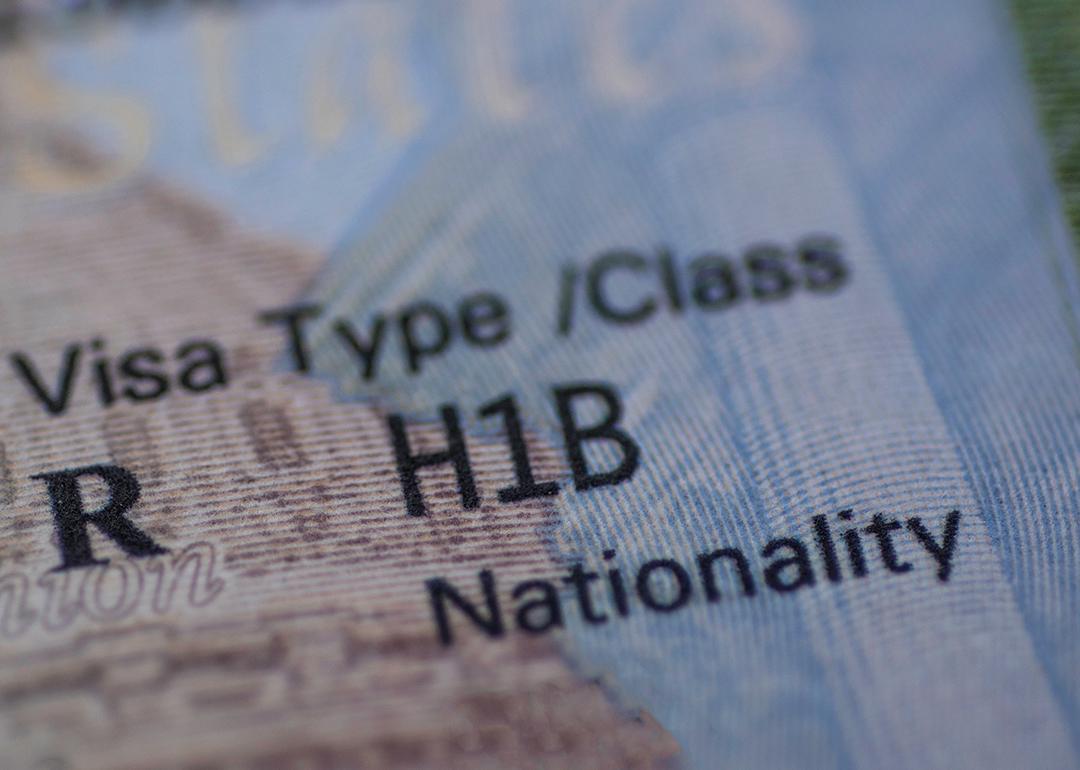
Getting an H-1B visa is like winning the lottery — here’s how the program works
Getting an H-1B visa is like winning the lottery — here’s how the program works
In 2025, more than 400,000 foreign professionals submitted their names for a chance at an H-1B visa, but only about 114,000 were selected.That 25.6% success rate is still higher than 2024’s even more competitive odds at 24.8%. For skilled workers hoping to live and work in the United States, the H-1B process has come to feel less like a job application and more like a game of chance.
But this high-stakes “lottery” isn’t just about numbers. The H-1B program fuels major industries like tech, health care, and engineering — all sectors struggling to meet demand with domestic workers alone. With recent reforms aimed at cutting fraud and increasing fairness, H-1B Employer Data looked into ways the U.S. is reshaping how it welcomes talent from abroad.
What is the H-1B visa?
The H-1B is a temporary, nonimmigrant visa that allows U.S. companies to hire foreign professionals in “specialty occupations.” These jobs require at least a bachelor’s degree and tend to cluster in science, technology, engineering, and math — collectively known as STEM fields.
Since its creation in 1990, the program has become one of the main legal pathways for skilled workers to enter the U.S. labor market. It’s also one of the most hotly debated, with advocates praising its economic benefits and critics raising concerns about fairness and wage suppression.
The structure: caps, lotteries, and reforms
Each year, the U.S. government issues a maximum of 85,000 H-1B visas: 65,000 under the general cap and 20,000 for workers with a U.S. master’s degree or higher. However, demand has long outpaced supply, which led U.S. Citizen and Immigration Services to implement a lottery system; one that, until recently, could be manipulated through multiple employer registrations.
That changed in FY 2025, when USCIS introduced a beneficiary-centric selection process. Instead of allowing multiple companies to submit separate entries for the same individual, USCIS now enters each worker into the lottery only once, regardless of how many offers they have. This helped reduce system gaming and slashed duplicate entries.
According to USCIS data, the average number of registrations per applicant dropped from 1.70 in fiscal year 2024 to just 1.06 in 2025. Total eligible registrations also declined by over 38%, from 758,994 to 470,342.
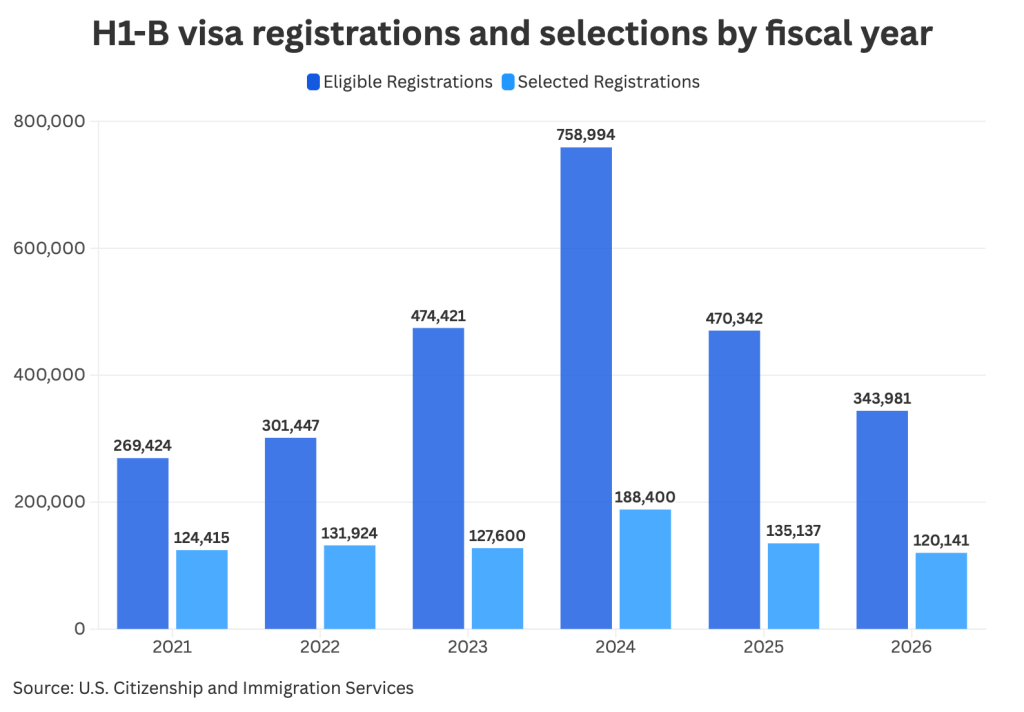
Who gets selected — and where do they come from?
The typical H-1B recipient is 33, holds at least a bachelor’s degree, and works in a tech-adjacent role. According to the latest congressional report from USCIS, 72.3% of approved H-1B petitions in FY 2023 came from India, followed by China at 11.7%. The rest came from countries like Canada, South Korea, and the Philippines in much smaller numbers.
In terms of education:
- 34% held a bachelor’s degree
- 22% held a master’s
- 8% held a doctorate
- 4% had a professional degree
- 32% had an unknown education level (often due to missing employer data)
Gender disparities persist: 71% of recipients in FY 2023 were male.
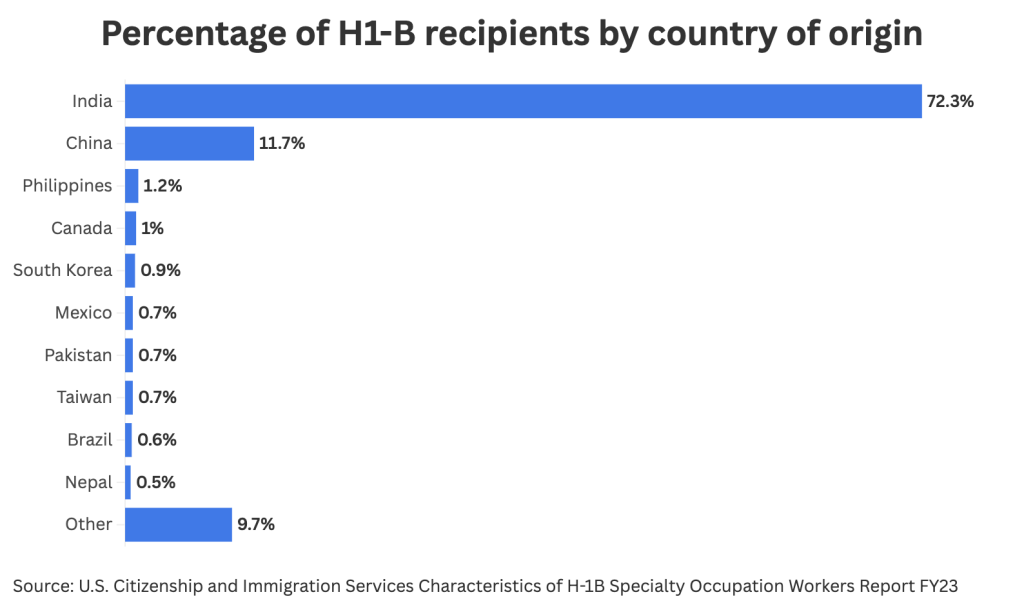
Where they work — and what they earn
The H-1B is deeply tied to the tech economy. In FY 2023, about 65% of all H-1B approvals were for computer-related occupations, with smaller shares in:
- Engineering and architecture: 9.5%
- Education: 6%
- Administrative specializations: 5%
- Health care and medicine: 4.3%
Employers must prove that a role qualifies as a “specialty occupation,” a position requiring both theoretical and practical expertise typically earned through a degree. That has made the H-1B a go-to solution for U.S. employers trying to close the STEM skills gap. A recent study from the American Immigration Council underscored how essential these workers are to filling chronic labor shortages.
They’re also well-compensated. According to a Forbes analysis of USCIS wage data, the average salary for H-1B computer professionals in FY 2022 was $129,000, with a median of $123,000. These figures have grown over 25% since 2018. Some top tech firms offer even more: Nvidia paid an average of $213,634, while Wipro paid $93,146.
These roles aren’t cheap for employers, either. Total costs for hiring an H-1B worker can exceed $30,000, once you factor in legal and government filing fees.
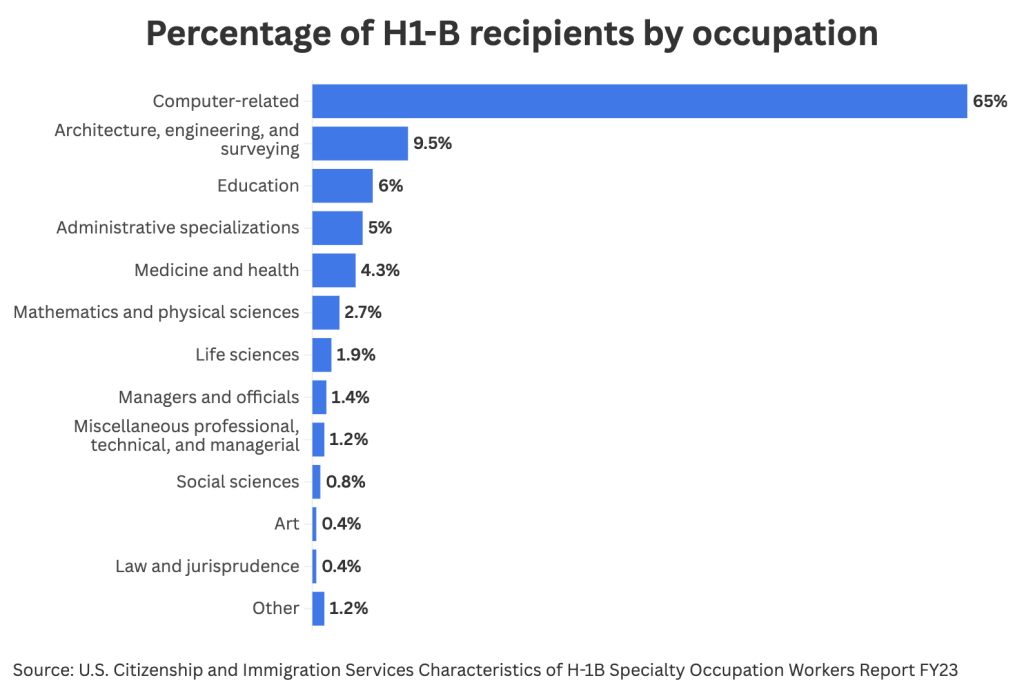
Which companies hire the most?
In FY 2025, the companies submitting the most Labor Condition Applications (a key part of the H-1B process) included:
- Amazon: 10,969 applications
- Cognizant: 8,688
- Ernst & Young: 8,674
- Tata Consultancy Services: 8,120
As this breakdown from MyVisaJobs shows, big tech and consulting firms dominate the top of the list. These companies rely heavily on global talent pipelines to maintain product development, infrastructure, and client services.
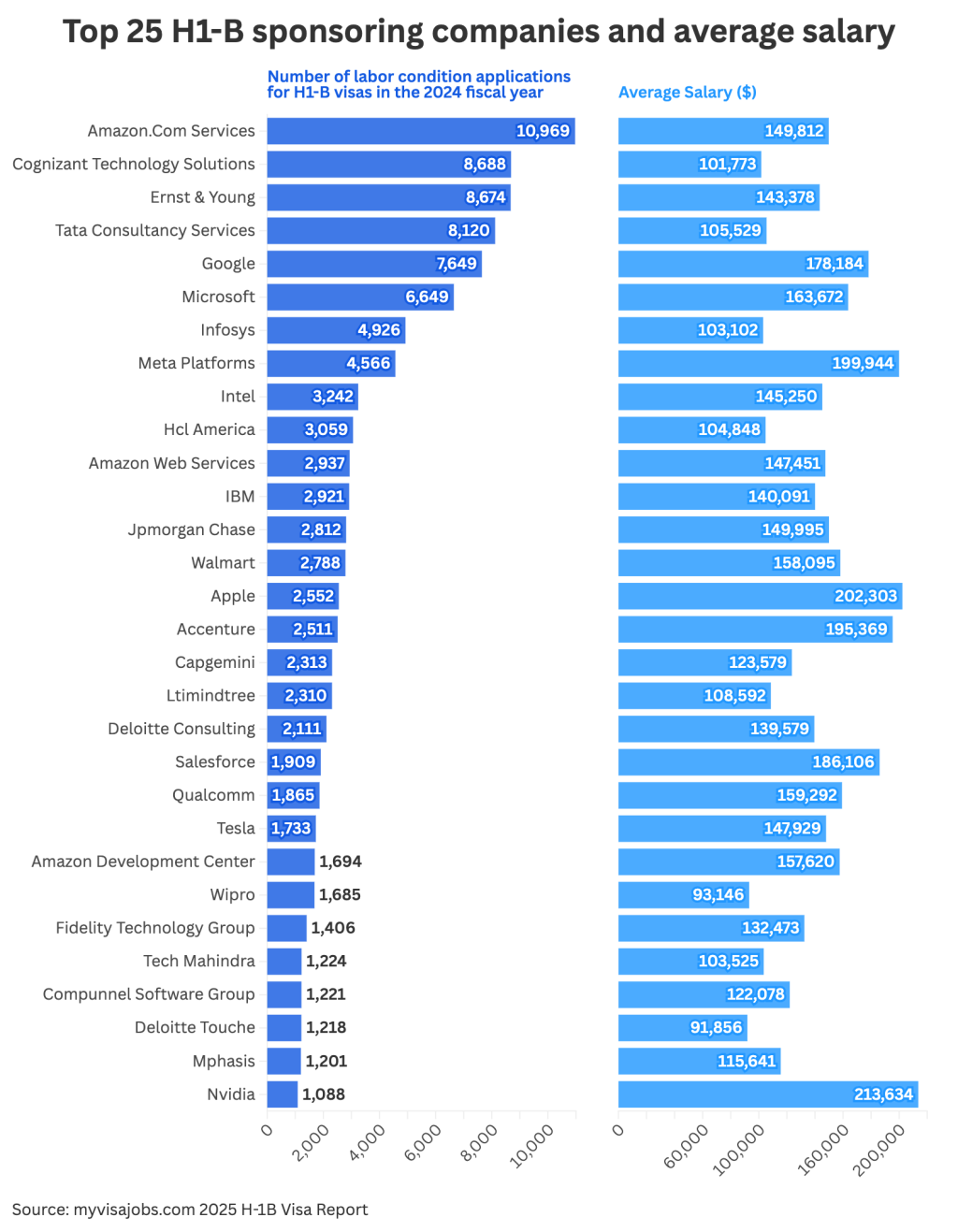
Economic impact — and lingering questions
Research shows the benefits of the H-1B program extend well beyond individual workers. Some studies estimate that each H-1B visa leads to 7.5 additional jobs for U.S. workers in related fields. The program also contributes to lower prices, higher innovation rates, and increased output in tech goods and services, particularly in regions that host large numbers of H-1B workers.
However, it’s not without controversy. Critics argue that the program can depress wages in certain sectors, while others believe it gives too much power to large corporations. Still, economic modeling has found that the overall impact is positive, especially for innovation and productivity in the U.S. economy.
What’s next?
The beneficiary-centric reform in FY 2025 marked a significant improvement in reducing fraud and leveling the playing field. USCIS has also increased site visits, random audits, and reporting mechanisms for suspected abuse — all part of a broader effort to increase transparency and trust in the system (USCIS fraud page).
Looking ahead, policy discussions will continue about whether the H-1B cap should be expanded, restructured, or replaced altogether. But one thing is clear: for tens of thousands of skilled professionals around the world, this visa remains the most direct, if unpredictable, path into the American workforce.
This story was produced by H1-B Employer Data and reviewed and distributed by Stacker.



